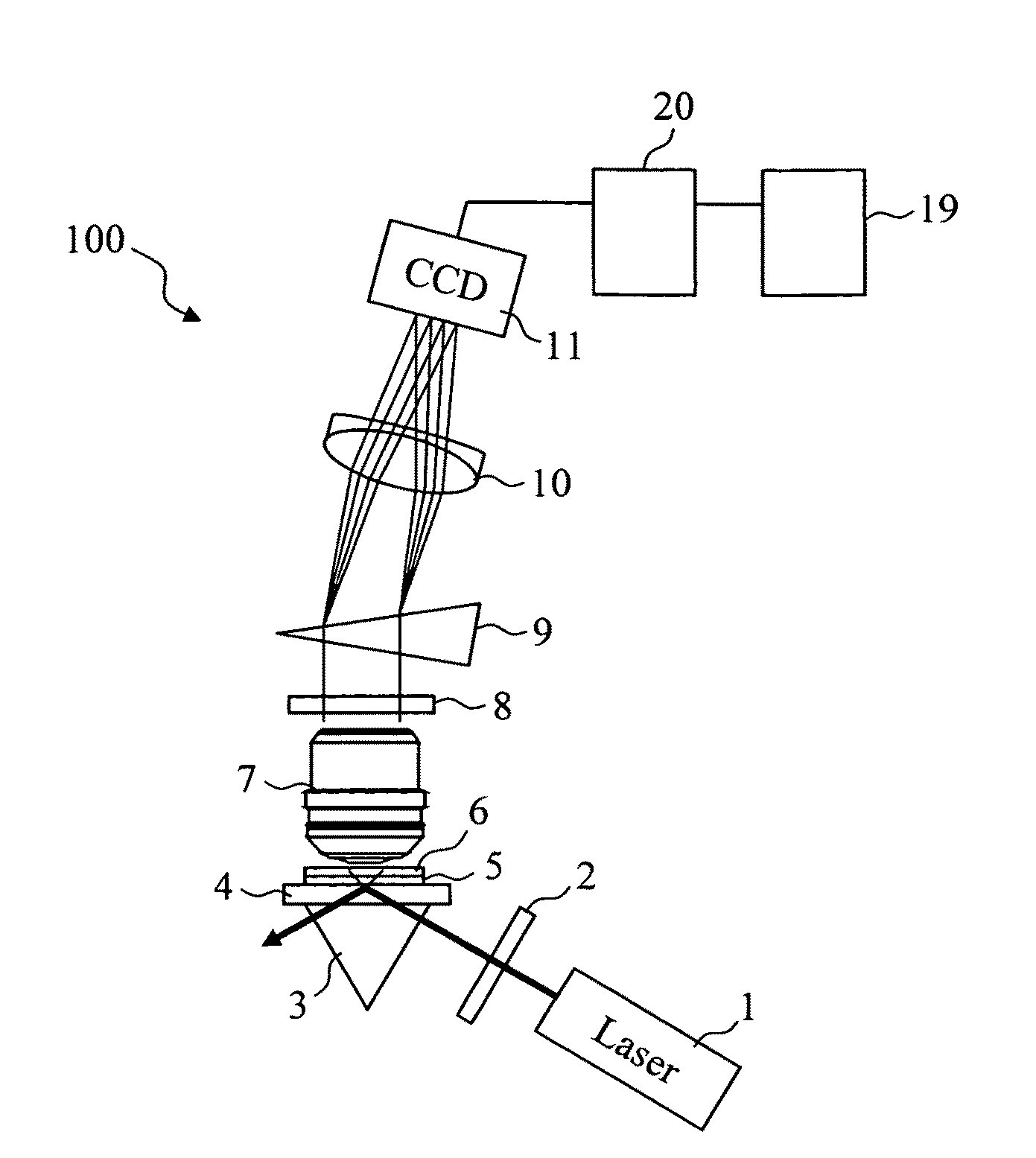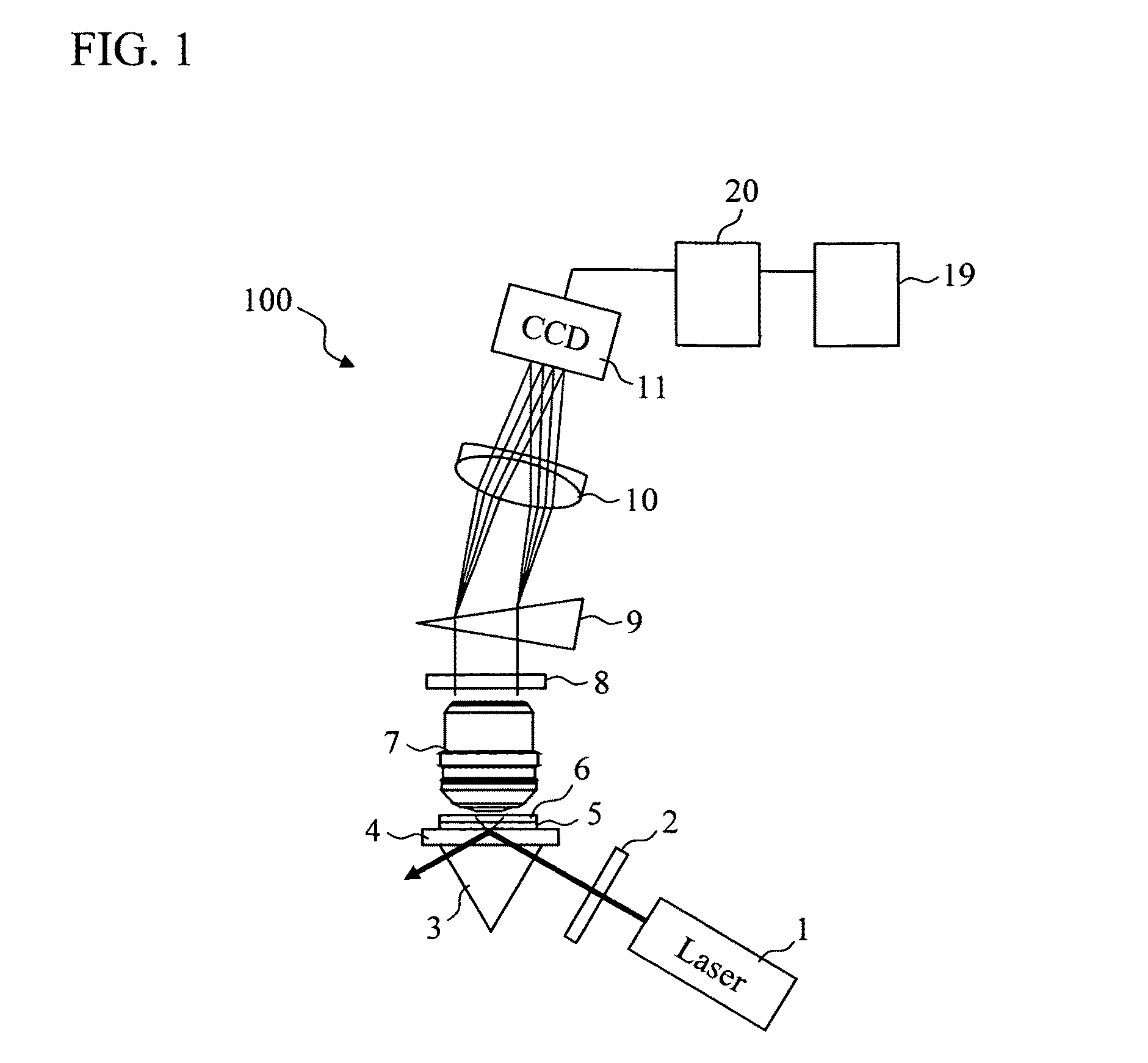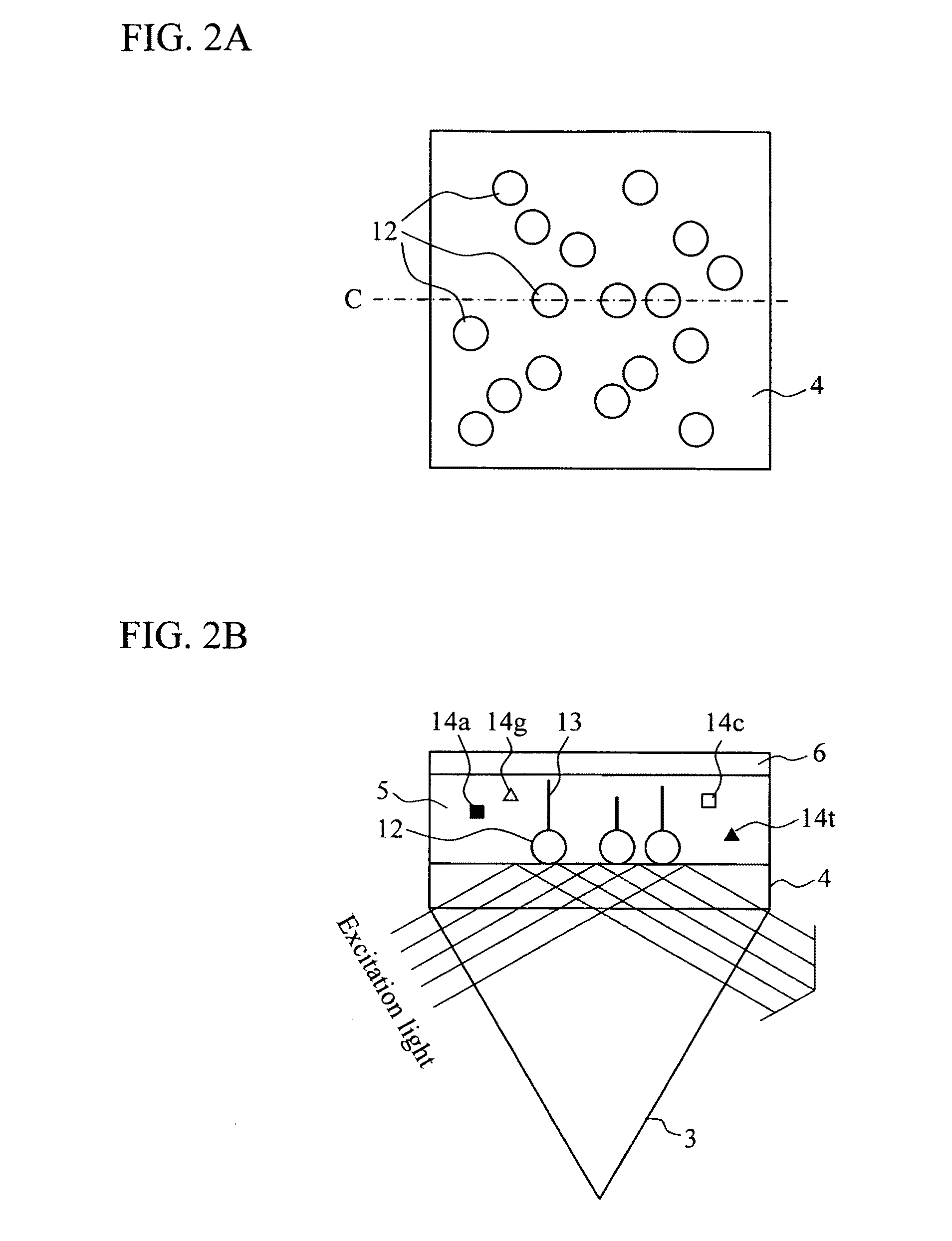Photometric instrument
a technology of photometric instruments and spot images, applied in instruments, spectrometry/spectrophotometry/monochromators, optical radiation measurement, etc., can solve the problems of unable to identify the species of phosphors, affecting the accuracy of spot images, etc., to achieve the effect of high accuracy
- Summary
- Abstract
- Description
- Claims
- Application Information
AI Technical Summary
Benefits of technology
Problems solved by technology
Method used
Image
Examples
first embodiment
1. Constitution of Photometric Instrument
[0036]FIG. 1 is a view showing a schematic constitution of a photometric instrument 100 according to a first embodiment of the present invention. In FIG. 1, after spectral purity thereof is enhanced by an excitation filter 2, excitation light emitted from an excitation source 1 enters a prism 3 and then enters a substrate 4. A space between the prism 3 and the substrate 4 is filled with matching oil, whereby total reflection is prevented from occurring on interfaces of these. The excitation light having entered the substrate 4 is totally reflected by an upper surface thereof, and generates evanescent waves on a surface of the substrate. A space between the upper surface of the substrate 4 and a cover glass 6 is filled with a reaction solution 5.
[0037]Luminescence from the surface of the substrate, which is excited by the evanescent waves, is condensed and collimated by an objective lens 7, and thereafter, a component (elastic scattered light)...
second embodiment
[0056]The same constitution as that of the photometric instrument 100 according to the first embodiment can be applied to a photometric instrument according to a second embodiment. Therefore, description regarding the constitution of the instrument will be omitted. Additionally, the same processing as that in the first embodiment can be applied to base species judgment here as well.
[0057]FIGS. 6A and 6B are enlarged views of the vicinity of the substrate 4 in the second embodiment. FIG. 6A is a top view of the substrate, and FIG. 6B is a cross-sectional view taken along an alternate long and short dash line C in FIG. 6A.
[0058]In this embodiment, the structures on which biomolecules are fixed are arranged in a lattice pattern by use of a semiconductor process. Furthermore, although EB (electron beam) drawing is used in the manufacturing process here, any one of dry etching and wet etching may be used.
[0059]By thus configuring the constitution, the structures (for example, gold partic...
third embodiment
[0060]The same constitution as that of the photometric instrument 100 according to the first embodiment can be applied to a photometric instrument according to a third embodiment. Therefore, description regarding the constitution of the instrument will be omitted. Additionally, the same processing as that in the first embodiment can be applied to base species judgment here as well.
[0061]FIGS. 7A and 7B are enlarged views of the vicinity of the substrate 4 in the third embodiment. FIG. 7A is a top view of the substrate, and FIG. 7B is a cross-sectional view taken along an alternate long and short dash line C in FIG. 7A.
[0062]In this embodiment, minute apertures provided to a metallic thin film are used as the structures on which biomolecules are fixed. Apertures each having a diameter of 100 nm are provided on an aluminum thin film through EB drawing with 2.3 micron pitches in lateral directions and with 1 micron pitches in longitudinal directions. However, a thin film made of any me...
PUM
| Property | Measurement | Unit |
|---|---|---|
| wavelength | aaaaa | aaaaa |
| wavelength | aaaaa | aaaaa |
| wavelength | aaaaa | aaaaa |
Abstract
Description
Claims
Application Information
 Login to View More
Login to View More - R&D
- Intellectual Property
- Life Sciences
- Materials
- Tech Scout
- Unparalleled Data Quality
- Higher Quality Content
- 60% Fewer Hallucinations
Browse by: Latest US Patents, China's latest patents, Technical Efficacy Thesaurus, Application Domain, Technology Topic, Popular Technical Reports.
© 2025 PatSnap. All rights reserved.Legal|Privacy policy|Modern Slavery Act Transparency Statement|Sitemap|About US| Contact US: help@patsnap.com



